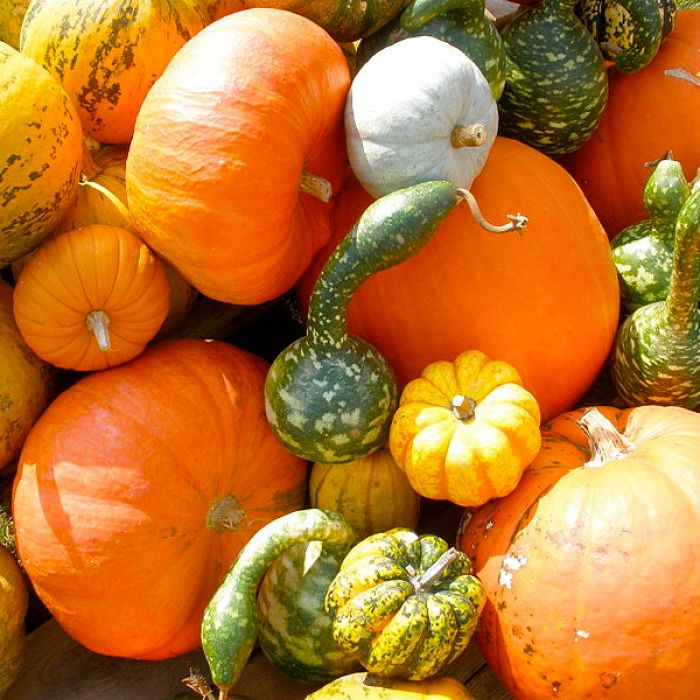
Since we are now officially in the Fall season, our thoughts may turn to Halloween and the Thanksgiving holiday. “What a better time to talk pumpkins”, I thought. The technical name for the pumpkin is Cucurbita, which is actually a number of different squashes, and a genus in the gourd family Cucurbitaceae.
I had no idea there were so many different kinds. Pumpkins are available in many colors, shapes, and sizes. They are used in pies and other desserts, and others are used for festive holiday decorations. As far as pumpkins specifically, there are a number of species “sub-groups”. Here are four of the common ones.
Cucurbita Moschata (C. moschata)
Like pumpkin pie? This group includes the “cheese” pumpkins often used for commercially canned pumpkin. They tend to be oblong in shape and have tan skin. Other members of this family include the Winter crookneck and butternut squashes.
Specific varieties include:
• ‘Long Island Cheese’, a pumpkin dating to the 19th century that resembles a wheel of cheese.
• ‘Musquee de Provence’, a large rare heirloom variety from southern France.
• ‘Violina’, another rare heirloom from Italy.
Cucurbita Pepo (C. pepo)
The pumpkin varieties most people recognize are from the Cucurbita Pepo group. These are the bright orange-skinned pumpkins carved as jack-o-lanterns or decorated for the Thanksgiving season. Members of Cucurbita Pepo include some of the most common squash seen in the grocery store, such as acorn, spaghetti, yellow crookneck, yellow summer and zucchini squashes.
Specific varieties include:
• ‘Jack O’ Lantern’, the quintessential variety for Halloween pumpkin carving.
• ‘Connecticut Field’
• ‘Champion’
• ‘Howden’ and Howden Biggi’
Other varieties include pattypan and gem squashes.
Cucurbita Maxima (C. maxima)
Pumpkins found in the Cucurbita Maxima group are the “monsters of the pumpkin world.” They are usually round and have a reddish-orange skin. This species also contains most winter, hubbard, turban, banana and buttercup squashes.
More notably though, they include some of the biggest varieties of pumpkins in the world, including those grown for weight competitions at county fairs every year. Pumpkins from this family typically produce fruits weighing more than 100 pounds. The new 2011 world record breaking pumpkin weighed in at a mind-blowing 1,818.5 pounds! Growers of giant pumpkins often hand-pollinate the flowers and leave only one fruit per plant for the best results.
Specific varieties include:
• The ‘Atlantic Giant’ (or ‘Dill’s Atlantic Giant’) variety was developed in the late 1800s, and is credited for all of the giant world-record-holding pumpkins grown.
• ‘PrizeWinner Hybrid’, a large competition-size variety.
• ‘Big Max’, ditto.
• ‘Australian Blue’, a rare Australian heirloom.
• ‘Queensland Blue’, a well-known Australian blue-gray-skinned pumpkin.
• ‘Marina di Chioggia’, an old Italian heirloom.
• ‘Red Kuri’ (also called ‘Baby Red Hubbard’), a Japanese variety.
Cucurbita Mixta (C. mixta)
The type of pumpkin known as Cucurbita Mixta includes the miniature variety pumpkins. These are often used in crafts or as ornamental table decorations during Fall holidays. Their shapes can include egg, round or pear-like. The colors of these are also unusual. They can be white, blue or blue-green, in addition to the familiar orange or yellow. Some of the hull-less and seedless varieties belong to this family. These varieties easy for children to handle and fun to decorate with.
Specific varieties include:
• The Cushaw pumpkin, also called the Cushaw squash, is one of the best known varieties. They are pear-shaped with a striped skin in green, yellow, orange or white.
• ‘Baby Bear’, which has “handles”.
• ‘Jack B. Little’, also abbreviated as “JBL”, looks like a tiny orange pumpkin with a flat top.
• ‘We Be Little’, a good variety for pumpkin pie filling and baking as a dessert.


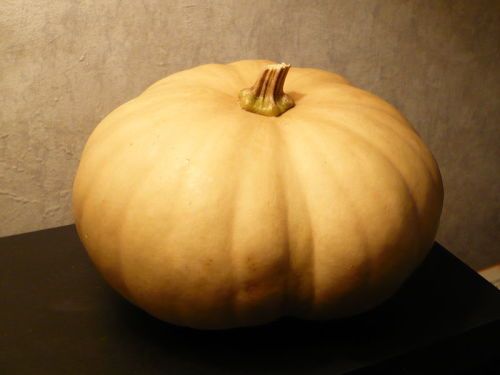
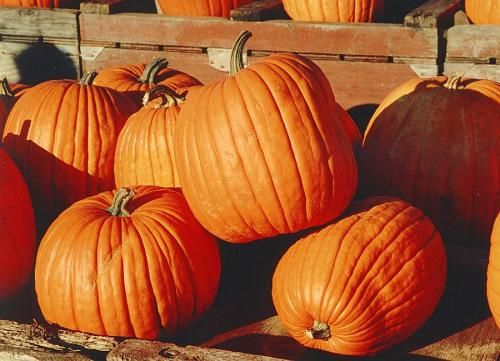
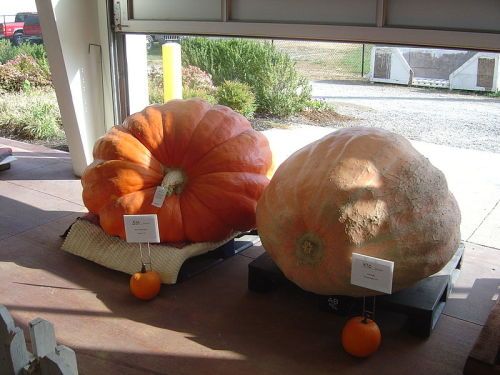
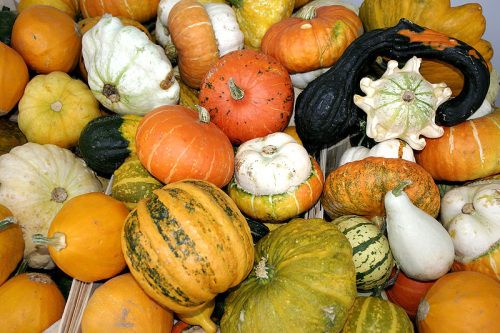
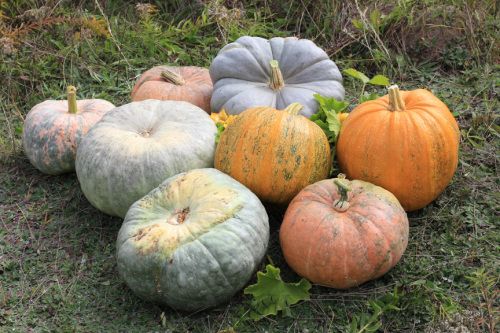



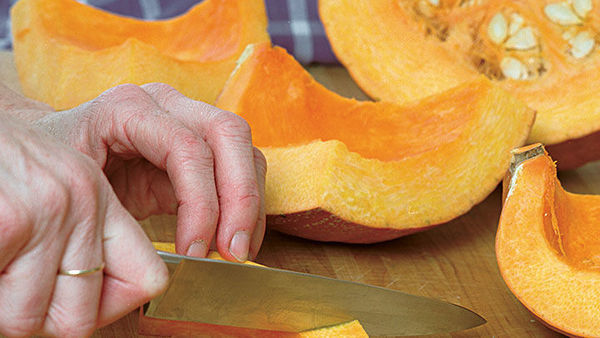












Comments
Log in or create an account to post a comment.
Sign up Log in